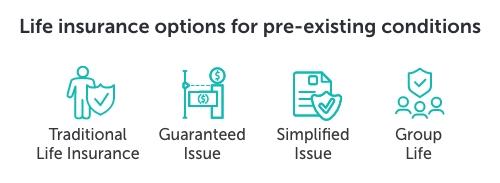Life insurance is a fundamental component of financial planning, providing a safety net for loved ones in the event of an untimely death. However, the cost of securing such coverage is not uniform for everyone. One of the most significant factors influencing life insurance premiums is the applicant’s health condition. Insurers assess health-related risks to determine the likelihood of a policyholder making a claim, which directly affects the premium rates. This article explores how various health conditions impact life insurance premiums, shedding light on the underwriting process and helping potential policyholders understand what to expect when applying for coverage. By examining the relationship between health and life insurance costs, readers can better navigate the complexities of securing affordable and appropriate life insurance.
Understanding the Relationship Between Health Conditions and Life Insurance Premiums
Navigating the intricacies of life insurance premiums often feels like piecing together a complex puzzle, where health conditions play a significant role in determining the final picture. Insurance providers meticulously assess an applicant’s health status to predict life expectancy and potential risk factors. This evaluation process typically involves reviewing medical history, current health conditions, and even lifestyle choices. Conditions such as diabetes, hypertension, or heart disease can lead to higher premiums, as they are considered indicators of increased risk. However, insurers may also take into account how well these conditions are managed, rewarding applicants who demonstrate proactive health management with more favorable rates.
It’s crucial to understand that not all health conditions impact premiums equally. Some conditions may result in minor adjustments, while others could significantly increase costs. Insurers often categorize conditions into risk tiers, with chronic and severe illnesses positioned at higher risk levels. To navigate these complexities, consider the following factors that could influence your premiums:
- Age of Onset: Early onset of certain conditions may be viewed more unfavorably.
- Treatment and Management: Regular treatment and effective management can mitigate premium increases.
- Family Medical History: A family history of certain diseases might affect risk assessment.
- Lifestyle Adjustments: Positive changes, such as quitting smoking or maintaining a healthy weight, can improve your premium rates.
Understanding these elements can empower you to better navigate your options and potentially secure more affordable life insurance coverage despite existing health conditions.

Key Health Conditions That Influence Premium Rates
When it comes to determining life insurance premiums, certain health conditions play a pivotal role. Insurers meticulously assess the risk associated with these conditions, which can lead to higher premiums. Some of the most influential health conditions include:
- Heart Disease: Individuals with a history of heart disease may face increased rates due to the elevated risk of heart attacks and related complications.
- Diabetes: Both Type 1 and Type 2 diabetes can impact premiums, as they are associated with long-term health issues like kidney damage and cardiovascular disease.
- Cancer: A current or past cancer diagnosis often results in higher premiums, reflecting the potential for recurrence and the overall impact on life expectancy.
- Obesity: Linked to numerous health problems such as hypertension and sleep apnea, obesity is another factor that can lead to higher insurance costs.
- High Blood Pressure: Chronic high blood pressure can increase the risk of heart disease and stroke, affecting premium rates.
Understanding these conditions and how they affect insurance premiums can empower individuals to make informed decisions when applying for life insurance. Maintaining a healthy lifestyle and managing any existing conditions can potentially lead to more favorable premium rates.

How Insurers Assess Risk Based on Medical History
When determining life insurance premiums, insurers delve into an applicant’s medical history to gauge the level of risk they pose. This assessment is crucial as it directly influences the cost of premiums. Medical records, including past diagnoses, treatments, and ongoing health issues, provide insurers with insights into potential future health concerns. Common factors that are scrutinized include:
- Chronic illnesses such as diabetes, heart disease, or asthma, which can signal a higher risk of future claims.
- Lifestyle-related conditions, like obesity or high blood pressure, often indicate potential health complications down the line.
- Family medical history, which can reveal predispositions to certain hereditary conditions.
Insurers use this information to categorize applicants into different risk classes. Those with a clean bill of health might qualify for lower premiums, while individuals with significant medical issues may face higher costs. This meticulous evaluation ensures that premiums are commensurate with the potential risk, balancing the needs of both the insurer and the insured.

Strategies for Managing Premium Costs with Pre-Existing Conditions
Managing the cost of life insurance when you have pre-existing conditions can be challenging, but with the right strategies, it’s possible to find a policy that suits your needs and budget. One effective approach is to shop around and compare quotes from multiple insurers. Different companies have varying underwriting criteria, and some may offer more favorable rates for certain health conditions. Another strategy is to improve your overall health; adopting healthier lifestyle habits, such as quitting smoking, maintaining a balanced diet, and exercising regularly, can positively impact your premiums over time.
Additionally, consider opting for term life insurance instead of whole life insurance, as it generally offers lower premiums. You can also explore group life insurance options through your employer, which might provide coverage without the need for a medical exam. Lastly, working with an experienced insurance broker can be invaluable. They can guide you through the process, help identify insurers who are more lenient towards specific health conditions, and assist in negotiating better rates. By leveraging these strategies, you can effectively manage your premium costs while securing the necessary coverage.

